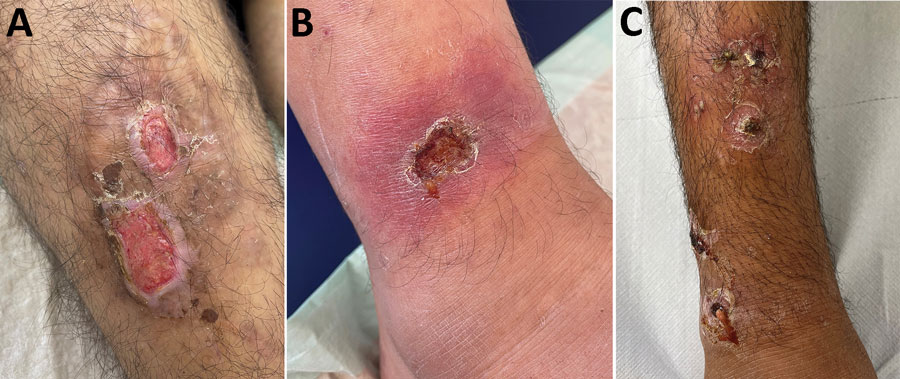Volume 29, Number 10—October 2023
Dispatch
Imported Toxigenic Corynebacterium Diphtheriae in Refugees with Polymicrobial Skin Infections, Germany, 2022
Figure

Figure. Clinical manifestations of Corynebacterium diphtheriae skin infections in patients at a refugee reception center in Freiburg. Germany, 2022. A) Chronic erosive skin lesions at the ventral lower thigh. Toxigenic C. diphtheriae, methicillin-sensitive Staphylococcus aureus (MSSA), and Streptococcus pyogenes were grown from skin swab samples. B) Ulcerative lesion with erythematous halo just above the right ankle. C. diphtheriae, MSSA, and S. pyogenes were detected from skin swab samples. C) Ecthymata at the lower leg without detection of C. diphtheriae but with growth of MSSA and S. pyogenes.
1These senior authors contributed equally to this article.
Page created: July 31, 2023
Page updated: September 20, 2023
Page reviewed: September 20, 2023
The conclusions, findings, and opinions expressed by authors contributing to this journal do not necessarily reflect the official position of the U.S. Department of Health and Human Services, the Public Health Service, the Centers for Disease Control and Prevention, or the authors' affiliated institutions. Use of trade names is for identification only and does not imply endorsement by any of the groups named above.